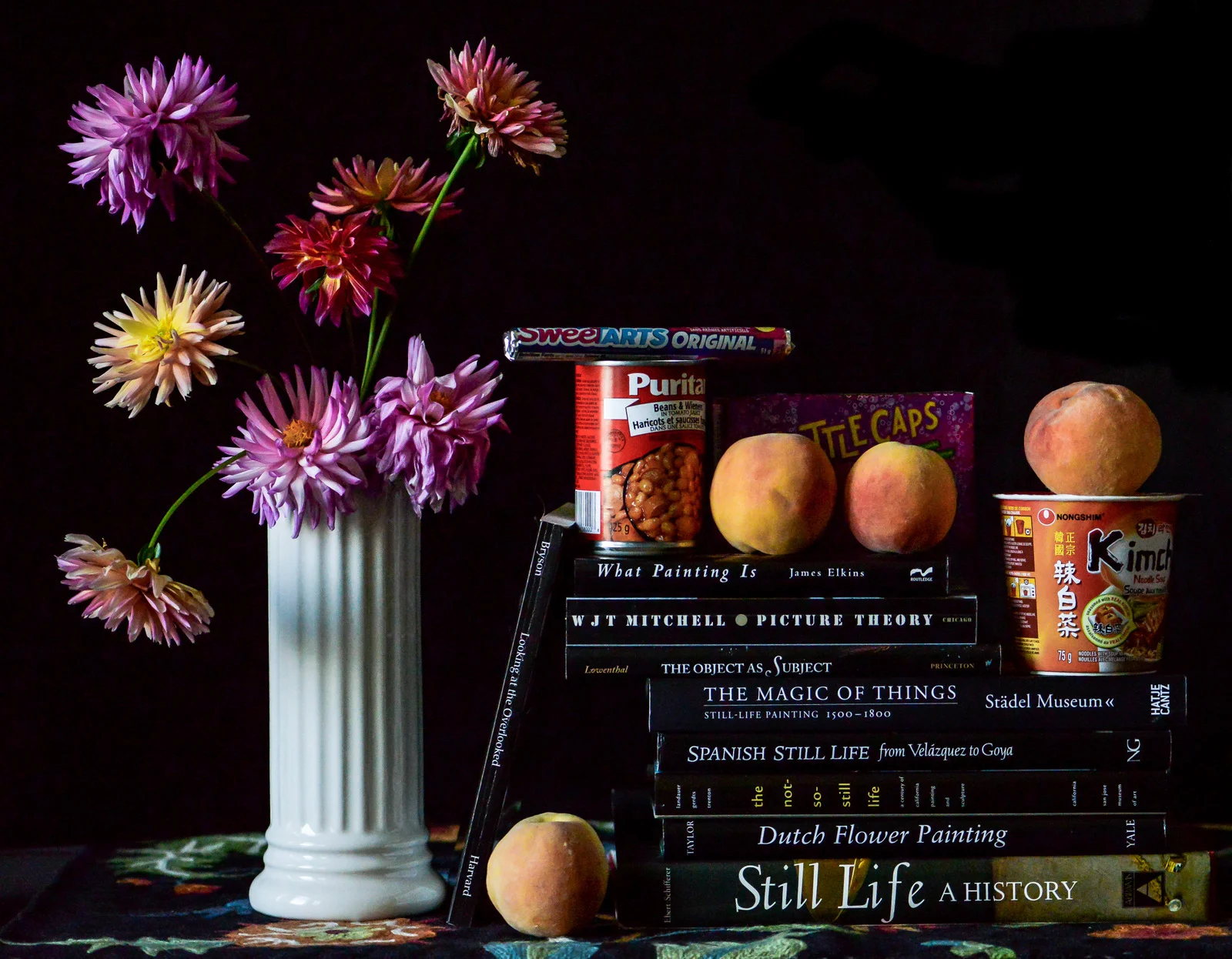On the Theme of Still Life
This past week a rather nice thing happened – an essay I wrote about collaborative couples, and on being married to a still life painter – was published on a favourite site of mine: LitHub. If all goes well, it will be one of the essays in a new collection….which I’m in the midst of writing. Another essay I’m writing, ongoing-ly, is one on photographing and creating my own still lifes. You’ll have seen some of them here, and some on Instagram, perhaps.
The stable ingredient in most of these experiments is a stack of books about still life. Conveniently, they all have black spines. The first book I read about still life was one of Rob’s titled, Looking at the Overlooked by Norman Bryson. It was published in 1990 and was quite a revelation then, and still holds up now. The books in my still lifes signal to the viewer, perhaps, an accumulation of knowledge, the importance of reading, the prestige of the books. Maybe the viewer finds this pretentious. I’m trying to throw in modern, less conventional items, along with the traditional. In doing so, I’m trying to say something about the way we really live. I’m trying to say something about wealth, abundance, the way things seem vs the way they are. How appearances regarding wealth can be deceiving. I want the objects to speak for themselves, but then, in my writing, I want to dwell on the possibilities. So.
Here is Bryson on abundance in traditional Dutch still life of the 17th century:
“Dutch still life painting is a dialogue between this newly affluent society and its material possessions. It involves the reflection of wealth back to the society which produced it, a reflection that entails the expression of how the phenomenon of plenty is to be viewed and understood. Perhaps one may begin with a fairly simple case, that of flower painting. What is immediately striking in the Bouquet in a Niche by Ambrosias Bosschaert is that while there is a sense of abundance – the vase could scarcely hold one stem ore – the abundance is, surprisingly, not that of nature. There is a notable absence, here and throughout the tradition of Dutch flower painting, of flowers that are wild.”
I’m at the stage of writing where I have a lot more questions than answers. Which is probably how it should be, anyway.
I’m wondering how a digital photograph of a still life reflects things back to society vs how a painting does. The abundance, quickness, immediacy of a digital photo is such a contrast to a painting that takes weeks to construct.
Really, just to even own the kind of camera I happen to have is a sign of a level of wealth and privilege.
We live in a Marie Kondo inspired world, where if a thing doesn’t spark joy, we’re advised to ditch it. But this, too, is a very privileged stance. You have to have stuff in the first place to ditch it.
I’m really conscious of this after I’ve worked a shift in my library branch which is full of at-risk people and those who are precariously low income as well as those who are homeless. I come home to my lower middle class house, which feels pretty decadent, in comparison. I have some pretty complicated feelings around all of this, let me tell you. It’s not easy always navigating these disparities, nor should it be. A lot of this swirls around in my mind on those insomniac nights, truthfully.
Things, though, amiright? Maybe they say more about how we live than we can say with words. Maybe a can of beans, bruised, dented peaches, and cup noodles say more than anything I can utter here right now.









